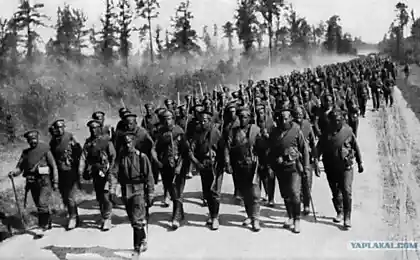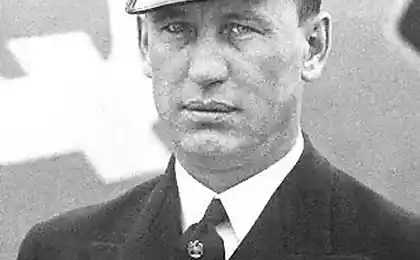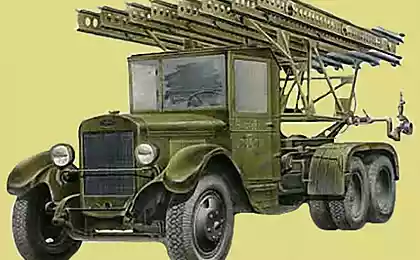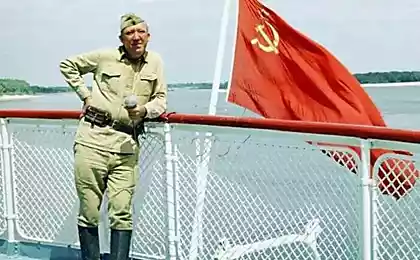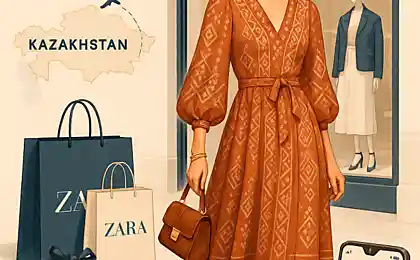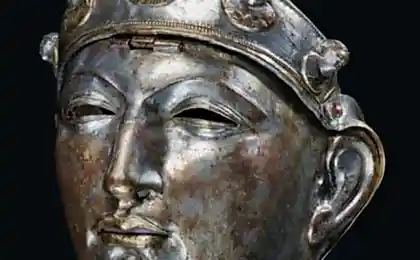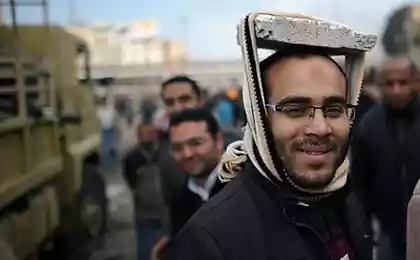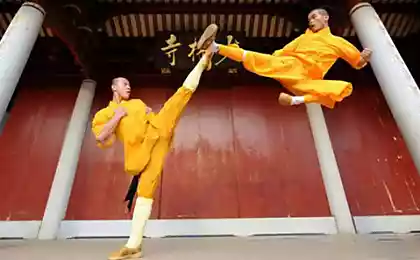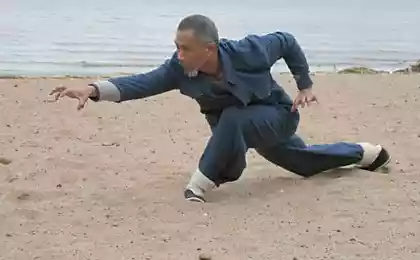4067
European combat helmets
Helmets are one of the most famous artifacts of war. Appearing at the dawn of civilization, they are almost never completely went out of use, constantly improving and developing.
Urschi standard war. Schumer. Around 2600 BC Sumerian warriors (second row, left) in a leather helmet with chin strap
25 photos.

The mural in honor Megaclite. Acropolis of Athens. VI. BC Hoplite in the Attic bronze helmet with a distinctive crest
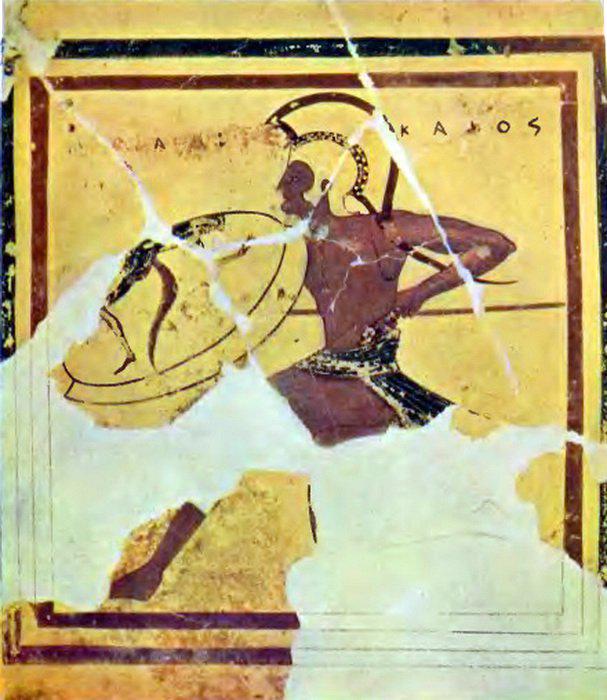
But perhaps the greatest prosperity helmets reached in the Middle Ages and in early modern times - there were dozens of them. It is this interesting historical period subject of this article. All helmets, photographs of which are presented in the article are true artifacts of the time, the majority - the museum exhibits. If you have information about weight, it is listed in the description.
Spangenhelm. Northern Europe. VI.
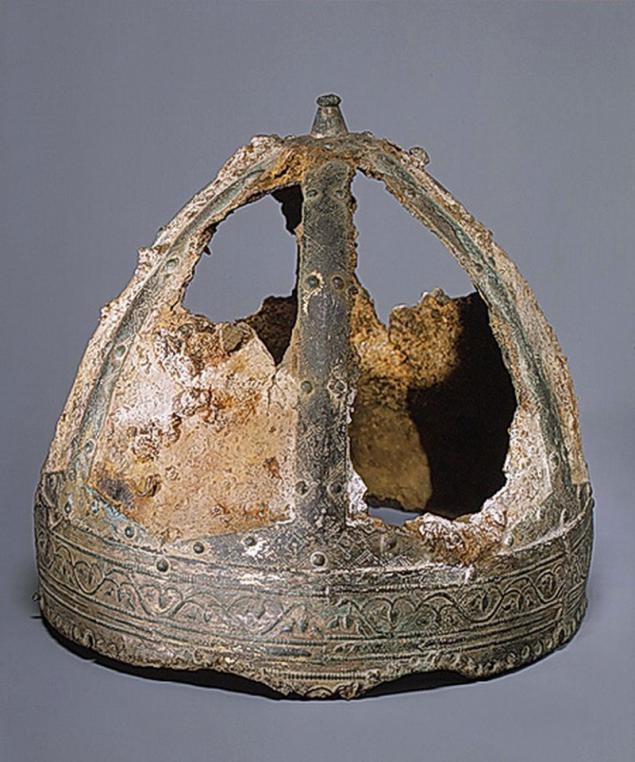
Spangenhelm from it. Spangenhelm - «rivet helmet" was a popular European combat helmet Early Middle Ages. Spangenhelm unlike nasal, segmental helmet is made of metal bands that form the structure of the helmet. Band joined with rivets three to six steel or bronze plates. The structure has a conical design. Spangenhelm could include protection of the nose (nanosnik) or half mask, protect the upper part of the face and, very rarely, a full face mask. Newer spangenhelmy often include flaps for protecting the cheeks, made of metal or leather. Originally helmets type spangenhelma appeared in Central Asia, more specifically in ancient Persia, where in the days of the decline of the Roman Empire on the southern route, along the Black Sea, penetrated into Europe.
Spangenhelm. Central Asia. VIII century.

It is in these helmets in Europe in the V century the warriors of the nomadic tribes of the steppes of Eurasia, such as the Sarmatians, who took the service crumbling Roman Empire. By the VI century it was the most popular helmet in Europe, including the Germans, as well as throughout the Middle East.
Helm remained in use until at least the IX century. Spangenhelm was a helmet with effective protection, which was relatively easy to make. However, the weakness of the design due to segmental eventually led to his ousting in the IX century nasal-metal helmets.
Vendel helmet. Scandinavia. VII century.
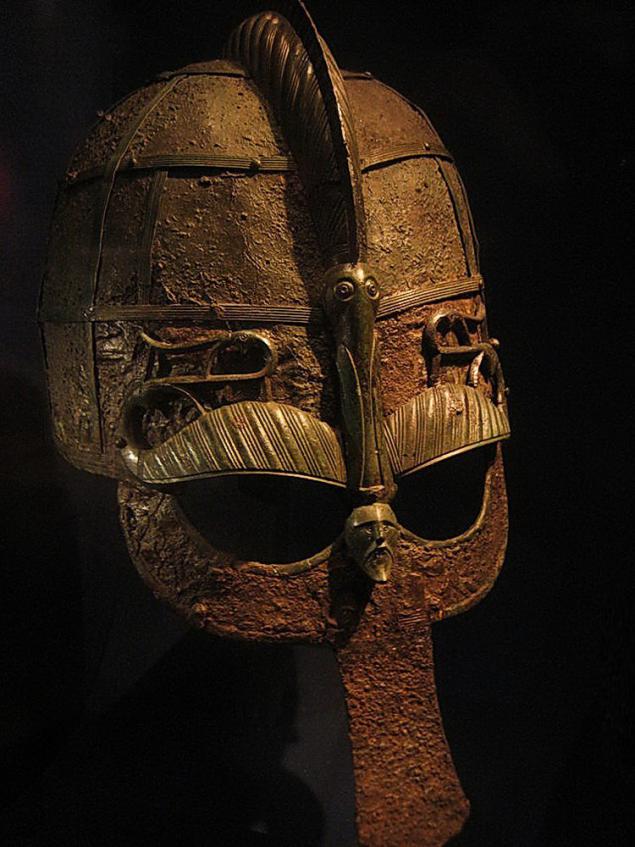
Nasal Helmet (in Russian tradition Norman helmet) from Eng. Nasal Helm - «nose helmet" or "helmet with nanosnikom" - the type of combat helmet, used from the early to the High Middle Ages. Is a further development of the earlier spangenhelma. Nasal helmet is dome-shaped or raised pointed center, with the only outstanding metal plate that extends down the nose. The plate provides additional protection for the front.
Nasal helmet. France. Start of the XIII century.
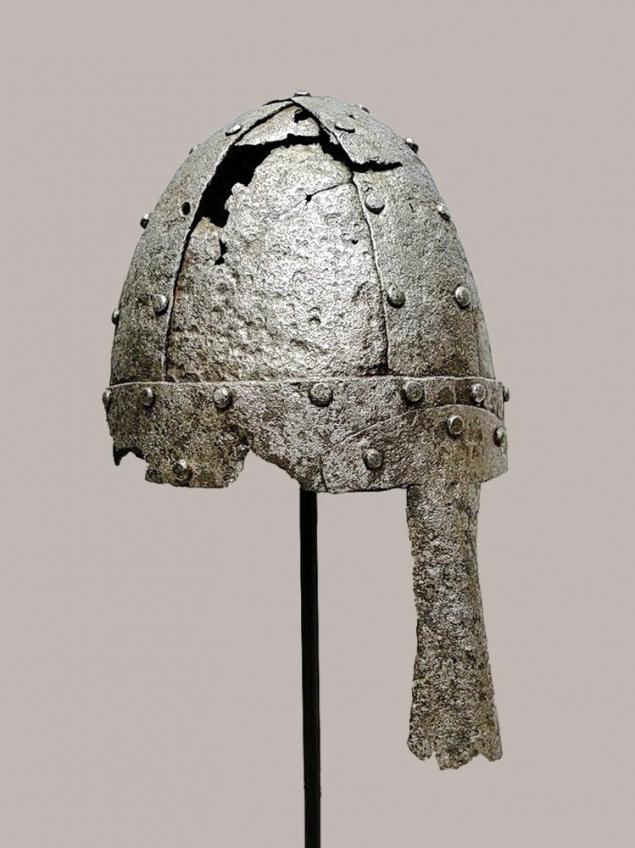
Nasal helmet appears throughout Europe at the end of the IX century. He becomes the predominant form of head protection, replacing the previous spangenhelmy and helmets Vendel type. He, or rather one of the earliest versions of it - vasgard, has become the most popular form of head protection while. Nasal helmet began to lose popularity in the late XII century, giving way to a helmet, which provides the best protection for the front. Although nasal helmet finally lost popularity among the higher class of knights in the middle of the XIII century, they were still widespread among archers, for which a wide field of view, it is extremely important.
Tselnokovanny nasal helmet. Moravia. XI century.
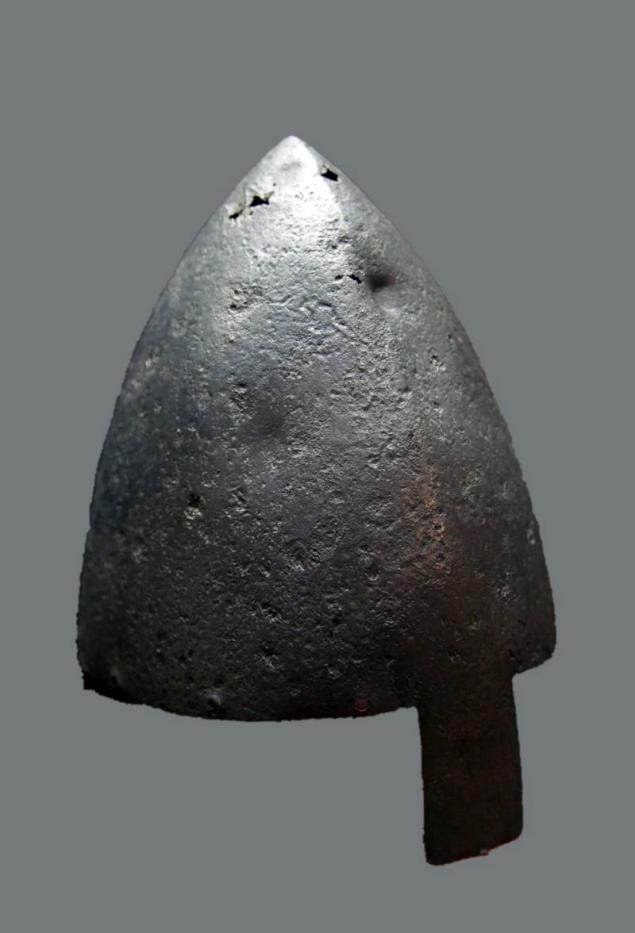
Norman in nasal helmet. Amateur reconstruction. Photos from the Abbey Medieval Festival
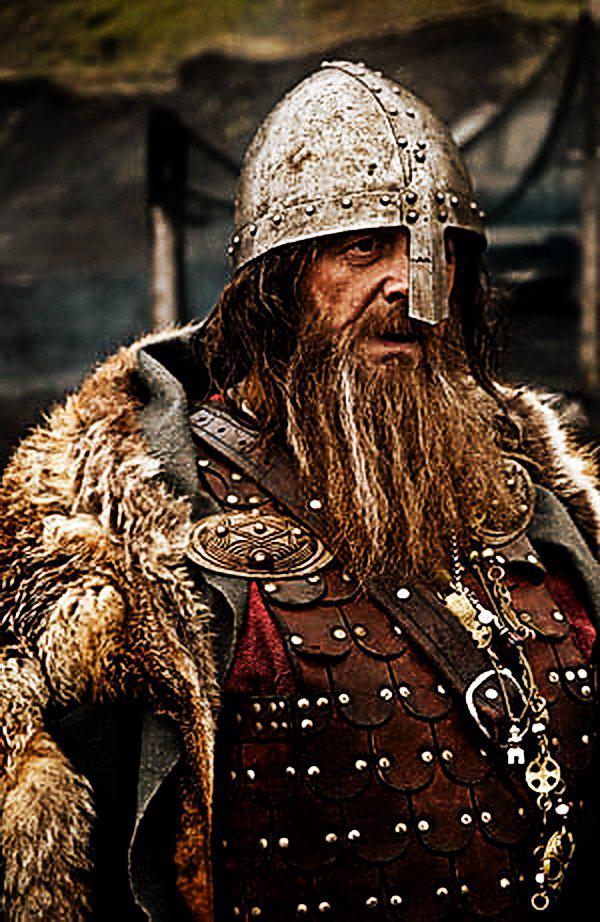
Grand Slam (from Eng. Great Helm) or Great helm from him. Topfhelm - «The pot helmet," is the most common Western European knight's helmet High Middle Ages. In Spain, Great helm called Yelmo de Zaragoza - «Saragosky helmet", where they first appeared in the Knights of the Iberian Peninsula. Emerged at the end of the XII century, in the era of the Crusades, and remained in use until the XIV century. They are massively used by knights and heavy infantry is extremely rare with about 1220 to 1340. In its simplest form, a grand slam is a cylinder with a flat top, which completely covers the head and has only a very narrow slits for the eyes and small holes for breathing. Later versions of Grand Slam got a curved design to the top, to better deflect and reduce the impact of shocks. This later version, with a conical top, known as hat "Sugar Loaf" (from Eng. Sugarloaf Helm) or kyubelhelm from it. Kubelhelm - «bucket hat."
Great helm. Nuremberg. Start of the XIV century.
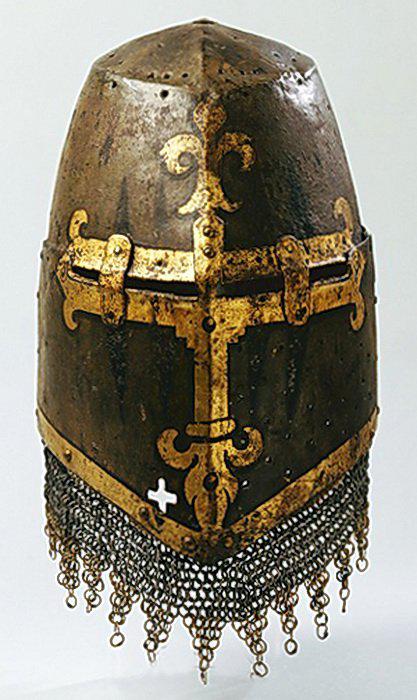
Although a grand slam and offered better protection than previous helmets, such as nasal and spangenhelm, he had a major flaw: strongly limited field of view of the owner and very poor ventilation, which due to lack of correct visor was impossible. Knights wore a Grand Slam felt liner and could wear tight-fitting steel cap (helmet), known as Cervelliere. For Grand Slam could also be fastened mail aventayl to protect the neck, throat and shoulders of the owner. Cervelliere gradually evolved from its early form an independent helmet - bascinet, and replaced a grand slam on the battlefield. Grand Slam gradually fell into disuse during the XIV century, however, and after that for a long time been used in tournaments. At the same tournament appeared his new heavy version shtehhelm from it. Stechhelm - Helmet "Frog-mouth helm».
Kyubelhelm. England. Around 1370
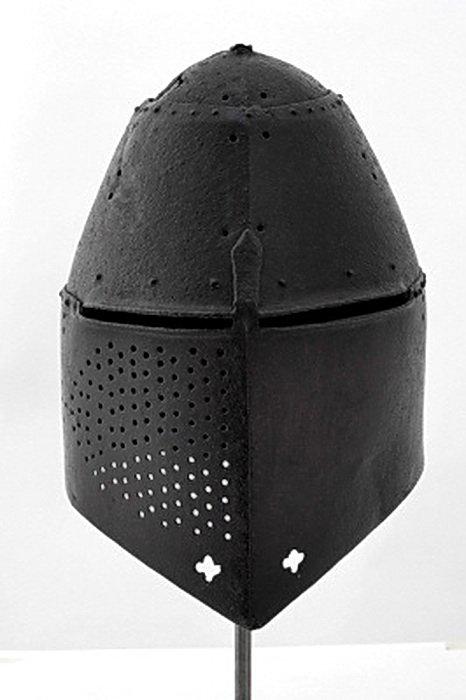
Knight in Great helm. Amateur reconstruction. Photos from the Abbey Medieval Festival
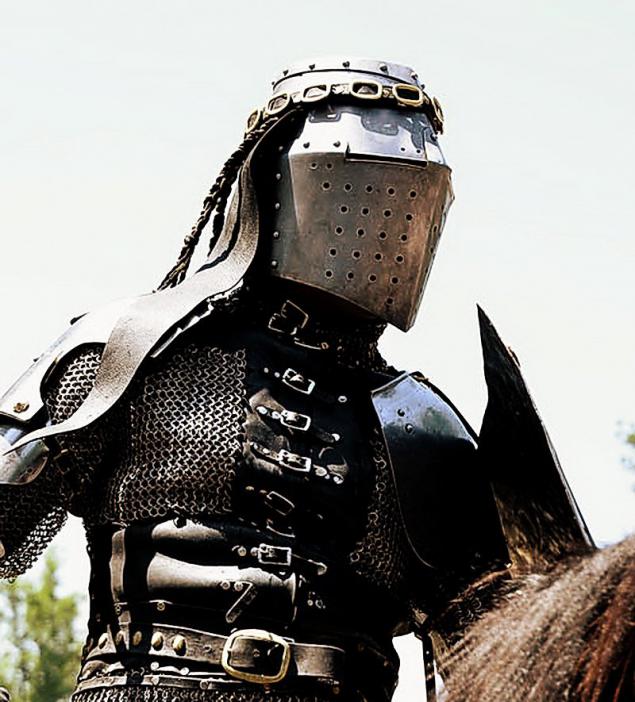
Shtehhelm. Northern Italy. 8 Weight 77 lbs. About 1475-1500 years.
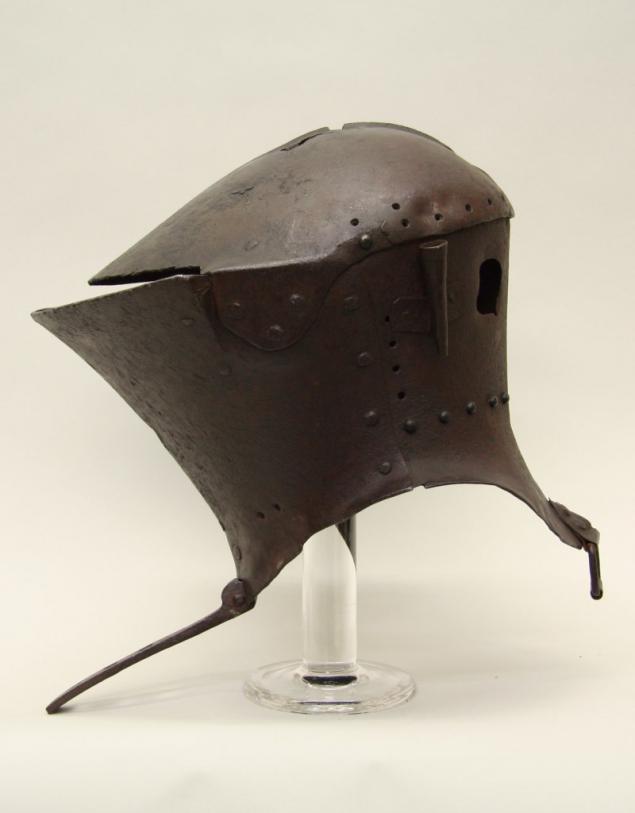
Shtehhelm. England or Flanders. Weight 7 4 kg. About 1410-1450 years.

A composite armor with shtehhelmom for tournaments King of Spain Philip I of Castile. The beginning of the XVI century.
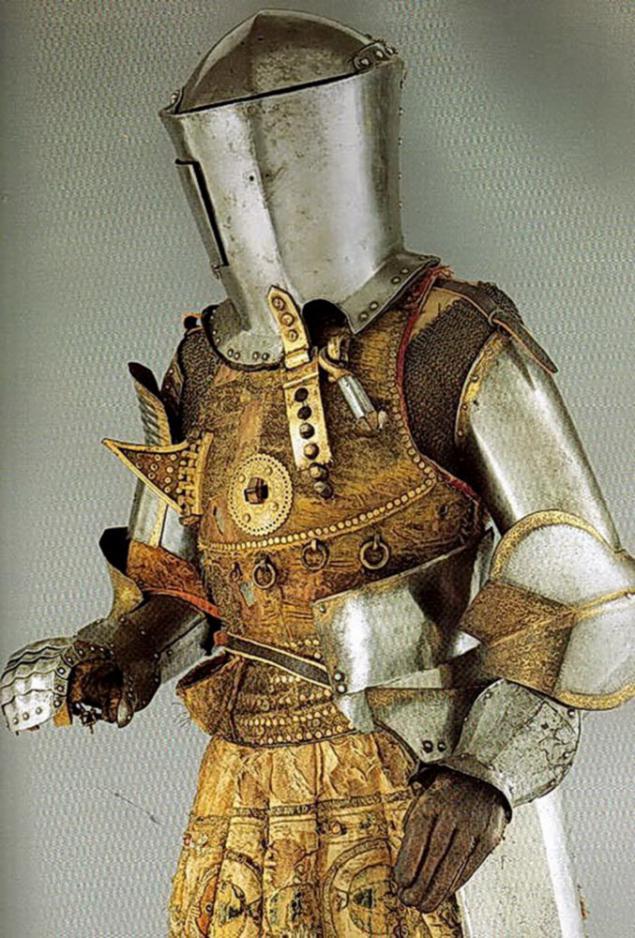
The earliest version bascinet beginning of the XIV century had no withdrew and worn under the Great helm. During the brutal melee knights often refused Grand Slam because it prevented breathing and had a bad visibility. Thus, the presence of additional smaller helmet underneath was a real big advantage in the melee. By the middle of the XIV century, most knights abandoned in favor of the Grand Slam bascinet. Bascinets, for the most part open-actively used and infantry. The earliest bascinets were still open and could even have nasal plate. However, they were quickly taken away for the most part a conical shape, for better ventilation. They were called Hounskull from it. Hundsgugel - «dog muzzle" and "snout" (from Eng. Pig Faced). The second type was klapvizor - visor with less outstretched form is attached only to the forehead in front rod and clamp straps on the sides, which was most common in Germany.
Bascinet open type. 1 Weight 8 kg. About 1370-1400 years.

Bascinet with visor Hounskull. Germany. About 1375-1400 years.
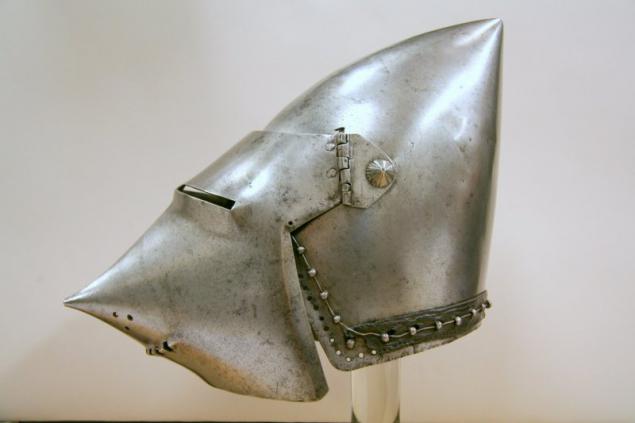
Bascinet with visor klapvizor. Germany. About 1420-1430 years.

Bascinet with a raised visor klapvizor. Germany. About 1420-1430 years
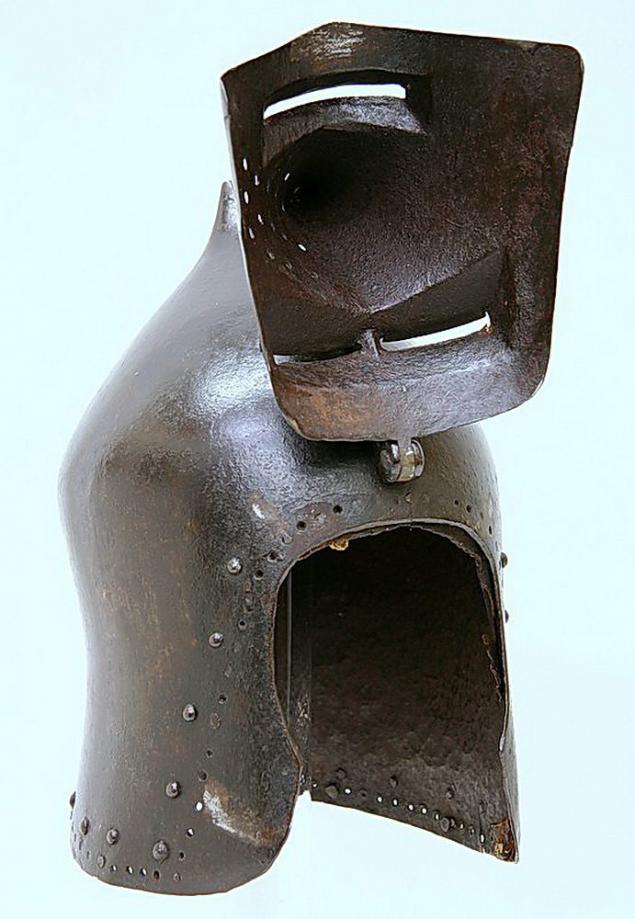
In earlier times was aventayl mail to protect the neck, throat and shoulders of the owner, while the later versions (from the beginning of the XV century) is often defended neck separate plate - plate necklace. On bascinets almost always done by small holes around the edges of the helmet. These holes are used to fasten upholstery inside the helmet. Wearing bascinet no longer requires a separate liner, like a grand slam. The upholstery was made of canvas or linen fabric and stuffed with a mixture of wool and horsehair. Chin straps to secure the helmet on his head then not used. Bascinet with and without a visor (often knights wore with a few replacement had taken - one for the collision of the spear, the other for close combat) was the most common helmet worn in Europe during the whole of the XIV century and the beginning of the XV century, including most of the Hundred Years' War . In Germany at the beginning of the XV century there was more convex version bascinet with large plates, in order to better protect the throat. Visor and helmet he purchased a round shape with a plurality of holes. These helmets were called Grand bascinets that were used by knights in tournaments until the end of the XV century did not develop into closed helmets.
Grand bascinet. Possibly, England. Around 1510

Chain-plate composite armor battle with bascinets hundskugel end of XIV-XV centuries of the first half Museum reconstruction
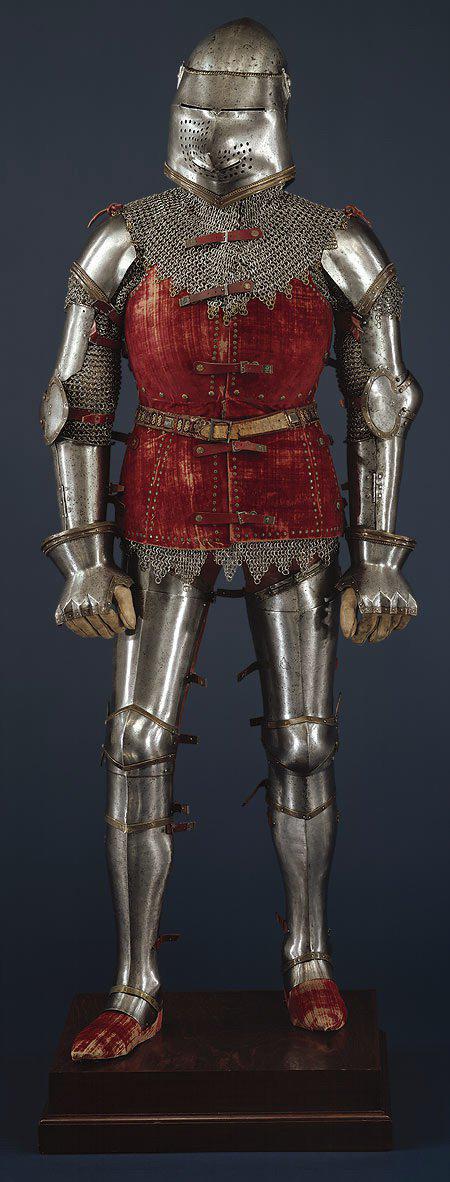
Salad open type. Italy or Spain. Weight 1 51 lbs. About 1470-1490 years.

Salad or tselata was a combat helmet, which replaced bascinet in Northern Europe and Hungary in the middle of the XV century. Most knights wore Salado richer with the addition of advanced front plates, protects the lower part of the face, jaw and neck, called bevor.
Salad closed. Germany. 3 Weight 62 lbs. Around 1490
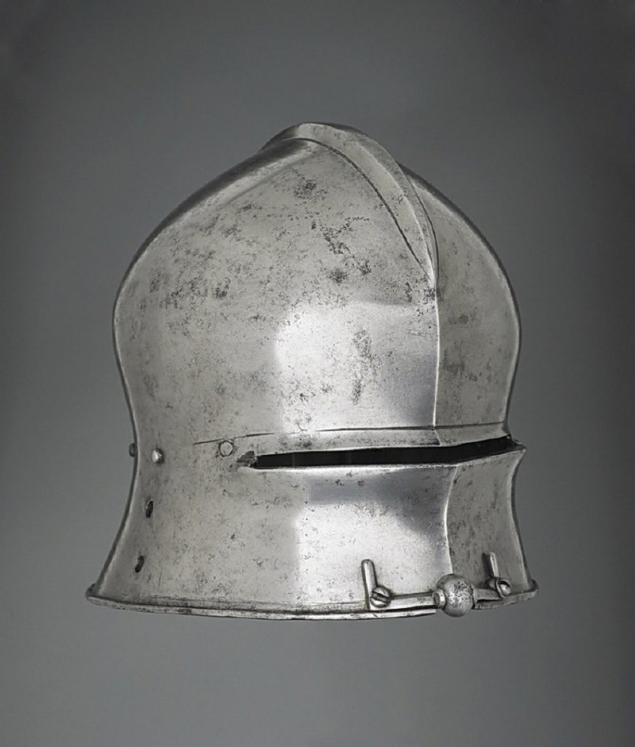
Salad with visor and bevorom. Southern Germany. 3 Weight 79 lbs. About 1480-1490 years.

Salado design contrasted with the Italian kind of combat helmets - Barbute that were popular in Italy at the same time.
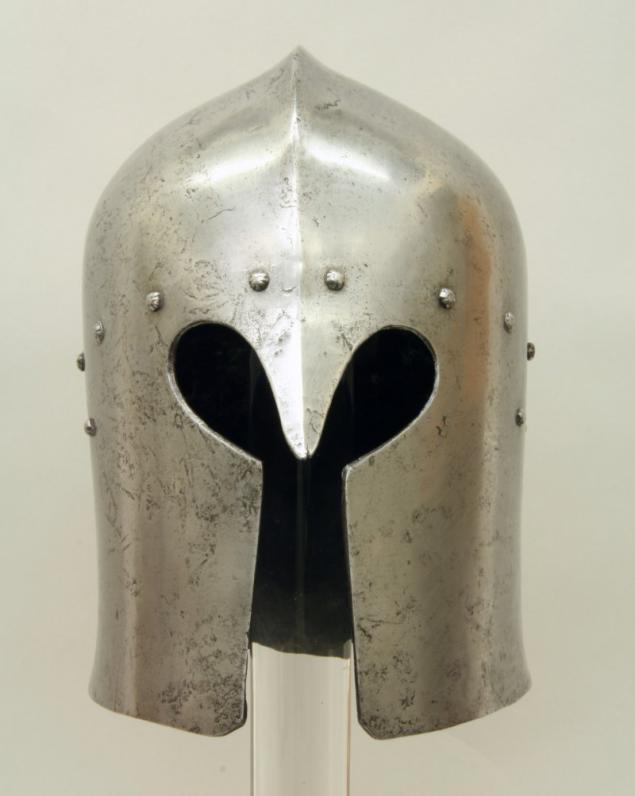
Italian masters took as an example of when you create classical Greek helmets that sometimes accidentally found in ancient ruins in Italy. Hallmark Barbute usually is formed in the shape of the letters «T» or «Y» part of the helmet to open the eyes and mouth. Took none. The existence Barbute limited XV century.
Barbute. Brescia. 2 Weight 21 lbs. About 1470-1480 years.
via
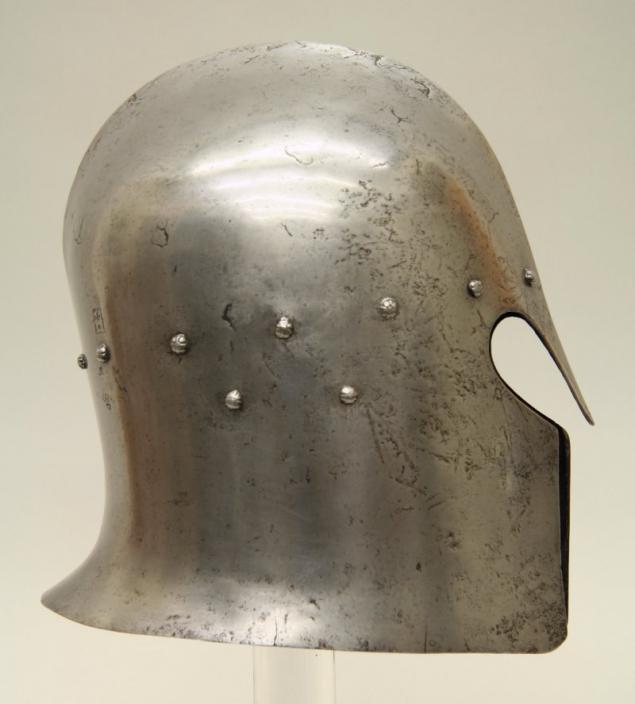
Urschi standard war. Schumer. Around 2600 BC Sumerian warriors (second row, left) in a leather helmet with chin strap
25 photos.

The mural in honor Megaclite. Acropolis of Athens. VI. BC Hoplite in the Attic bronze helmet with a distinctive crest

But perhaps the greatest prosperity helmets reached in the Middle Ages and in early modern times - there were dozens of them. It is this interesting historical period subject of this article. All helmets, photographs of which are presented in the article are true artifacts of the time, the majority - the museum exhibits. If you have information about weight, it is listed in the description.
Spangenhelm. Northern Europe. VI.

Spangenhelm from it. Spangenhelm - «rivet helmet" was a popular European combat helmet Early Middle Ages. Spangenhelm unlike nasal, segmental helmet is made of metal bands that form the structure of the helmet. Band joined with rivets three to six steel or bronze plates. The structure has a conical design. Spangenhelm could include protection of the nose (nanosnik) or half mask, protect the upper part of the face and, very rarely, a full face mask. Newer spangenhelmy often include flaps for protecting the cheeks, made of metal or leather. Originally helmets type spangenhelma appeared in Central Asia, more specifically in ancient Persia, where in the days of the decline of the Roman Empire on the southern route, along the Black Sea, penetrated into Europe.
Spangenhelm. Central Asia. VIII century.

It is in these helmets in Europe in the V century the warriors of the nomadic tribes of the steppes of Eurasia, such as the Sarmatians, who took the service crumbling Roman Empire. By the VI century it was the most popular helmet in Europe, including the Germans, as well as throughout the Middle East.
Helm remained in use until at least the IX century. Spangenhelm was a helmet with effective protection, which was relatively easy to make. However, the weakness of the design due to segmental eventually led to his ousting in the IX century nasal-metal helmets.
Vendel helmet. Scandinavia. VII century.

Nasal Helmet (in Russian tradition Norman helmet) from Eng. Nasal Helm - «nose helmet" or "helmet with nanosnikom" - the type of combat helmet, used from the early to the High Middle Ages. Is a further development of the earlier spangenhelma. Nasal helmet is dome-shaped or raised pointed center, with the only outstanding metal plate that extends down the nose. The plate provides additional protection for the front.
Nasal helmet. France. Start of the XIII century.

Nasal helmet appears throughout Europe at the end of the IX century. He becomes the predominant form of head protection, replacing the previous spangenhelmy and helmets Vendel type. He, or rather one of the earliest versions of it - vasgard, has become the most popular form of head protection while. Nasal helmet began to lose popularity in the late XII century, giving way to a helmet, which provides the best protection for the front. Although nasal helmet finally lost popularity among the higher class of knights in the middle of the XIII century, they were still widespread among archers, for which a wide field of view, it is extremely important.
Tselnokovanny nasal helmet. Moravia. XI century.

Norman in nasal helmet. Amateur reconstruction. Photos from the Abbey Medieval Festival

Grand Slam (from Eng. Great Helm) or Great helm from him. Topfhelm - «The pot helmet," is the most common Western European knight's helmet High Middle Ages. In Spain, Great helm called Yelmo de Zaragoza - «Saragosky helmet", where they first appeared in the Knights of the Iberian Peninsula. Emerged at the end of the XII century, in the era of the Crusades, and remained in use until the XIV century. They are massively used by knights and heavy infantry is extremely rare with about 1220 to 1340. In its simplest form, a grand slam is a cylinder with a flat top, which completely covers the head and has only a very narrow slits for the eyes and small holes for breathing. Later versions of Grand Slam got a curved design to the top, to better deflect and reduce the impact of shocks. This later version, with a conical top, known as hat "Sugar Loaf" (from Eng. Sugarloaf Helm) or kyubelhelm from it. Kubelhelm - «bucket hat."
Great helm. Nuremberg. Start of the XIV century.

Although a grand slam and offered better protection than previous helmets, such as nasal and spangenhelm, he had a major flaw: strongly limited field of view of the owner and very poor ventilation, which due to lack of correct visor was impossible. Knights wore a Grand Slam felt liner and could wear tight-fitting steel cap (helmet), known as Cervelliere. For Grand Slam could also be fastened mail aventayl to protect the neck, throat and shoulders of the owner. Cervelliere gradually evolved from its early form an independent helmet - bascinet, and replaced a grand slam on the battlefield. Grand Slam gradually fell into disuse during the XIV century, however, and after that for a long time been used in tournaments. At the same tournament appeared his new heavy version shtehhelm from it. Stechhelm - Helmet "Frog-mouth helm».
Kyubelhelm. England. Around 1370

Knight in Great helm. Amateur reconstruction. Photos from the Abbey Medieval Festival

Shtehhelm. Northern Italy. 8 Weight 77 lbs. About 1475-1500 years.

Shtehhelm. England or Flanders. Weight 7 4 kg. About 1410-1450 years.

A composite armor with shtehhelmom for tournaments King of Spain Philip I of Castile. The beginning of the XVI century.

The earliest version bascinet beginning of the XIV century had no withdrew and worn under the Great helm. During the brutal melee knights often refused Grand Slam because it prevented breathing and had a bad visibility. Thus, the presence of additional smaller helmet underneath was a real big advantage in the melee. By the middle of the XIV century, most knights abandoned in favor of the Grand Slam bascinet. Bascinets, for the most part open-actively used and infantry. The earliest bascinets were still open and could even have nasal plate. However, they were quickly taken away for the most part a conical shape, for better ventilation. They were called Hounskull from it. Hundsgugel - «dog muzzle" and "snout" (from Eng. Pig Faced). The second type was klapvizor - visor with less outstretched form is attached only to the forehead in front rod and clamp straps on the sides, which was most common in Germany.
Bascinet open type. 1 Weight 8 kg. About 1370-1400 years.

Bascinet with visor Hounskull. Germany. About 1375-1400 years.

Bascinet with visor klapvizor. Germany. About 1420-1430 years.

Bascinet with a raised visor klapvizor. Germany. About 1420-1430 years

In earlier times was aventayl mail to protect the neck, throat and shoulders of the owner, while the later versions (from the beginning of the XV century) is often defended neck separate plate - plate necklace. On bascinets almost always done by small holes around the edges of the helmet. These holes are used to fasten upholstery inside the helmet. Wearing bascinet no longer requires a separate liner, like a grand slam. The upholstery was made of canvas or linen fabric and stuffed with a mixture of wool and horsehair. Chin straps to secure the helmet on his head then not used. Bascinet with and without a visor (often knights wore with a few replacement had taken - one for the collision of the spear, the other for close combat) was the most common helmet worn in Europe during the whole of the XIV century and the beginning of the XV century, including most of the Hundred Years' War . In Germany at the beginning of the XV century there was more convex version bascinet with large plates, in order to better protect the throat. Visor and helmet he purchased a round shape with a plurality of holes. These helmets were called Grand bascinets that were used by knights in tournaments until the end of the XV century did not develop into closed helmets.
Grand bascinet. Possibly, England. Around 1510

Chain-plate composite armor battle with bascinets hundskugel end of XIV-XV centuries of the first half Museum reconstruction

Salad open type. Italy or Spain. Weight 1 51 lbs. About 1470-1490 years.

Salad or tselata was a combat helmet, which replaced bascinet in Northern Europe and Hungary in the middle of the XV century. Most knights wore Salado richer with the addition of advanced front plates, protects the lower part of the face, jaw and neck, called bevor.
Salad closed. Germany. 3 Weight 62 lbs. Around 1490

Salad with visor and bevorom. Southern Germany. 3 Weight 79 lbs. About 1480-1490 years.

Salado design contrasted with the Italian kind of combat helmets - Barbute that were popular in Italy at the same time.

Italian masters took as an example of when you create classical Greek helmets that sometimes accidentally found in ancient ruins in Italy. Hallmark Barbute usually is formed in the shape of the letters «T» or «Y» part of the helmet to open the eyes and mouth. Took none. The existence Barbute limited XV century.
Barbute. Brescia. 2 Weight 21 lbs. About 1470-1480 years.
via

